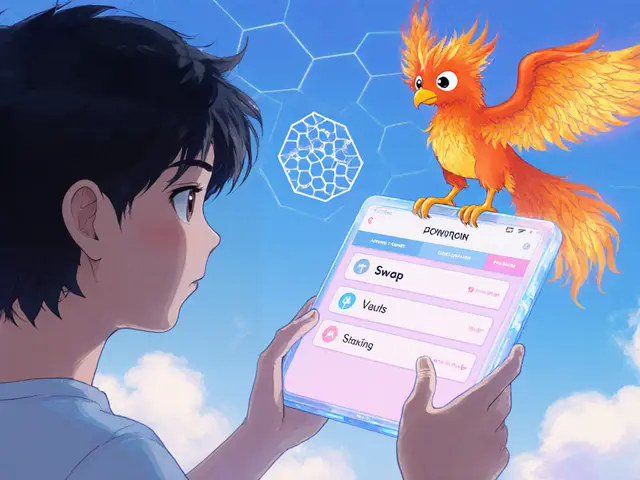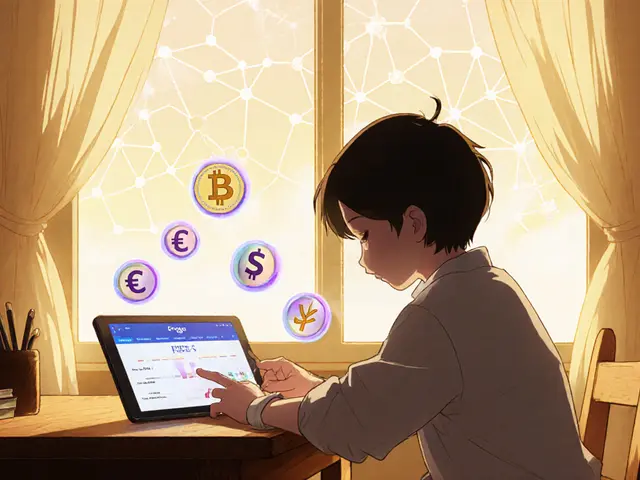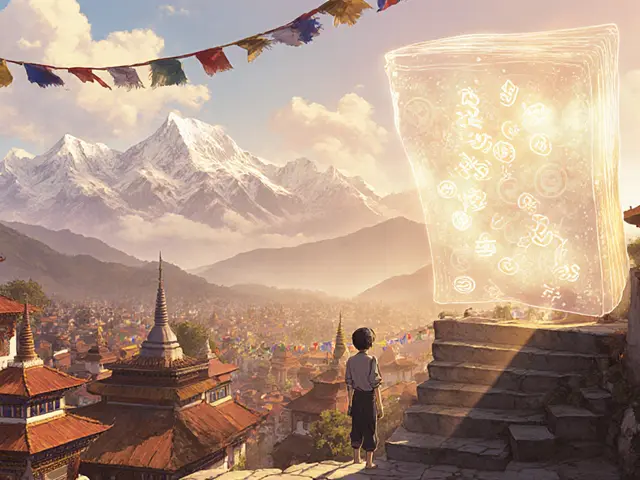DFX Finance Stablecoin Swap Calculator
Swap Analysis Results
DFX Finance is a decentralized foreign exchange (FX) protocol that lets users swap fiat‑backed stablecoins on the Polygon network. Launched in 2021, it aims to cut the USD‑centric bias of most DeFi platforms by offering a dedicated AMM for low‑volatility assets. If you’ve ever wondered whether a niche DEX can actually replace traditional FX corridors, keep reading - this review breaks down the tech, tokenomics, user experience, and where DFX stands in today’s crowded crypto landscape.
Quick Takeaways
- DFX focuses solely on fiat‑backed stablecoins, delivering ultra‑low slippage for cross‑border swaps.
- Built on Polygon, it benefits from sub‑cent gas fees and sub‑second confirmation times.
- The native DFX token trades around $0.008 with a market cap under $350k, reflecting modest liquidity.
- Compared with general‑purpose DEXs, DFX offers better pricing on non‑USD stablecoins but suffers from limited pair listings.
- Using DFX requires a Polygon‑compatible wallet (e.g., MetaMask) and some MATIC for gas.
What Exactly Is DFX Finance?
At its core, DFX Finance is a decentralized foreign exchange protocol that swaps fiat‑backed stablecoins (like EUR‑s, GBP‑s, etc.) without relying on a centralized intermediary. Unlike traditional crypto‑centric DEXs that list ETH, BTC, or a grab‑bag of tokens, DFX’s order book is replaced by a proprietary Automated Market Maker (AMM) fine‑tuned for assets that rarely deviate from $1. This optimization means traders experience near‑zero price impact and negligible slippage - essential when moving real‑world money across borders.
Why Polygon?
Polygon (formerly Matic) is the Layer‑2 scaling solution that underpins DFX’s performance. By anchoring to Polygon, DFX inherits:
- Gas fees that often stay below $0.001 per transaction.
- Block times around 2 seconds, making swaps feel instantaneous.
- Compatibility with the wider Ethereum ecosystem, so users can bridge assets from Ethereum or other L2s.
The trade‑off is that users must hold MATIC to pay for those fees, adding a tiny step before any swap.
Tokenomics: The DFX Token
The platform’s native governance and fee‑distribution token, DFX token, has a circulating supply of 43,581,877 against a hard cap of 100million. Priced near $0.008, it accounts for a market cap of roughly $335k and trades on a handful of secondary markets. Token holders earn a slice of the AMM spread, effectively turning the protocol’s trading activity into passive yield. However, with a 24‑hour volume of just $1,835, the yield potential remains modest - a clear signal that liquidity is still thin.
How to Use DFX Finance
Getting started is straightforward for anyone who’s already comfortable with DeFi wallets:
- Install a Web3‑compatible wallet (MetaMask, Trust Wallet, etc.).
- Add the Polygon network - most wallets have a one‑click “Add Polygon” button.
- Acquire a small amount of MATIC for gas. You can bridge MATIC from Ethereum or buy it on a centralized exchange.
- Visit the DFX web app, connect your wallet, and select the stablecoin pair you want to exchange.
- Confirm the transaction. The AMM instantly settles, and you’ll see the new stablecoin balance in your wallet.
The UI is clean but minimalist; there’s no order book, no margin trading, and no complex fee schedule - just a spread that’s baked into the quoted price.

Pros and Cons - A Balanced View
Pros
- Specialization: Tailored for fiat‑stablecoin swaps, delivering tighter spreads than generic DEXs.
- Low fees: Polygon’s cheap gas keeps transaction costs negligible.
- Governance rewards: DFX token holders share in trading fees.
- Regulatory-friendly: By staying within fiat‑stablecoins, the protocol is less exposed to the volatility concerns that regulators often target.
Cons
- Liquidity scarcity: Daily volume under $2k limits trade size before slippage creeps in.
- Limited pair list: Only a handful of non‑USD stablecoins are supported.
- Low visibility: Not listed on major centralized exchanges, reducing retail exposure.
- Community size: Minimal social media chatter makes it hard to gauge sentiment.
How Does DFX Stack Up? Comparison Table
| Feature | DFX Finance | Uniswap (Polygon) | SushiSwap (Polygon) |
|---|---|---|---|
| Primary asset focus | Fiat‑backed stablecoins only | All ERC‑20 tokens | All ERC‑20 tokens |
| AMM specialization | Low‑volatility optimized | General‑purpose constant product | General‑purpose constant product |
| Average slippage (10k$ trade) | ~0.02% | ~0.15% | ~0.18% |
| Gas cost (Polygon) | ~$0.001 | ~$0.001 | ~$0.001 |
| Liquidity (USDC pool) | ~$200k | ~$12M | ~$9M |
| Governance token | DFX | UNI | SUSHI |
| Major exchange listings | None (no CEX) | Multiple CEX | Multiple CEX |
Investment Outlook for the DFX Token
With a current price of about $0.008 and a circulating supply of 43.5M, the DFX token remains deeply discounted relative to its utility. Forecasts from 3commas.io and MEXC hint at a potential rise to $0.014 by 2025, but those numbers are based on limited historical data - the token’s daily volume is too thin for robust modeling. If DFX can attract institutional players needing cheap, low‑slippage fiat‑stablecoin swaps, token demand could climb, pushing price upward. Conversely, failure to broaden pair listings or list on a major CEX would likely keep the token stuck in low‑liquidity limbo.
Future Opportunities and Risks
Two macro trends could swing DFX’s fortunes:
- CBDC rollout: Central banks exploring digital currencies could increase demand for non‑USD stablecoin bridges, giving DFX a ready‑made niche.
- Regulatory clarity: As governments tighten rules around stablecoins, a protocol that focuses on fiat‑backed assets might enjoy a regulatory advantage over more speculative tokens.
On the flip side, larger DEXs could simply add dedicated non‑USD pools, eroding DFX’s unique selling point. Moreover, the platform’s low visibility means any security breach would be hard to contain without a robust community response.
Step‑by‑Step: Swapping EUR‑S for GBP‑S on DFX
- Open MetaMask and switch to the Polygon network.
- Ensure you have a small MATIC balance for gas.
- Visit dfx.finance and click “Connect Wallet”.
- Select the EUR‑S/GBP‑S pair from the dropdown.
- Enter the amount you wish to convert and review the displayed price and spread.
- Confirm the transaction; it will settle in under 5 seconds.
- Check your wallet - the new GBP‑S tokens should appear instantly.
This flow showcases how DFX removes the traditional friction of bank wires or centralized exchanges, but remember the pool’s depth is limited. For very large swaps, you may need to split the order or seek a liquidity provider.
Frequently Asked Questions
Is DFX Finance safe to use?
The protocol’s code is open‑source and runs on Polygon, which benefits from Ethereum’s security model. However, low liquidity means price manipulation is easier, so keep trade sizes modest until the pools grow.
What stablecoins can I trade on DFX?
Currently supported fiat‑backed assets include USDC, EUR‑S, GBP‑S, and a few regional tokens. The list is static but the team plans to add more as demand rises.
Do I need to pay any platform fees?
DFX doesn’t charge explicit fees; it earns revenue from the AMM spread, which is baked into the quoted price you see.
Can I earn yield by holding DFX tokens?
Yes. Token holders receive a share of the protocol’s trading fees, distributed proportionally to their stake. The yield is modest while liquidity is low.
How does DFX differ from Uniswap?
Uniswap is a general‑purpose DEX supporting any ERC‑20 token. DFX is built exclusively for fiat‑stablecoins and uses a low‑volatility‑optimized AMM, which typically offers tighter spreads on those assets.
Whether you’re a crypto trader looking for cheap cross‑border swaps or an institution exploring DeFi‑grade FX solutions, DFX Finance offers a focused, low‑fee experience on Polygon. Its biggest challenges are liquidity and brand awareness, so treat it as a complementary tool rather than a primary exchange until the pools deepen.







Write a comment
Your email address will be restricted to us